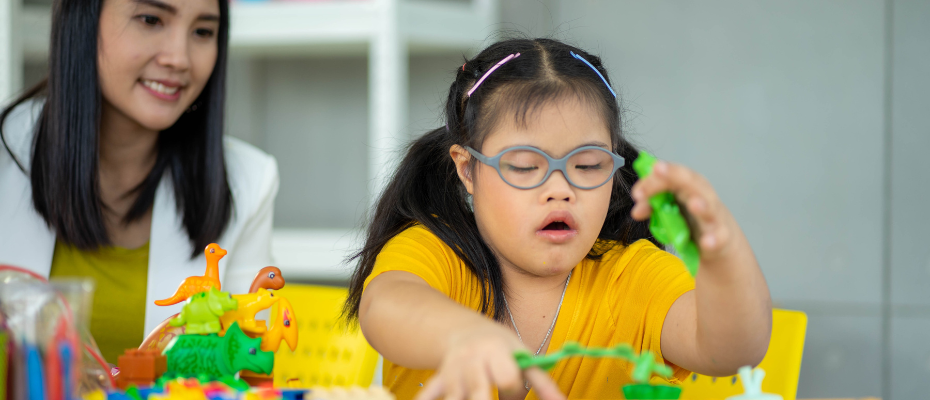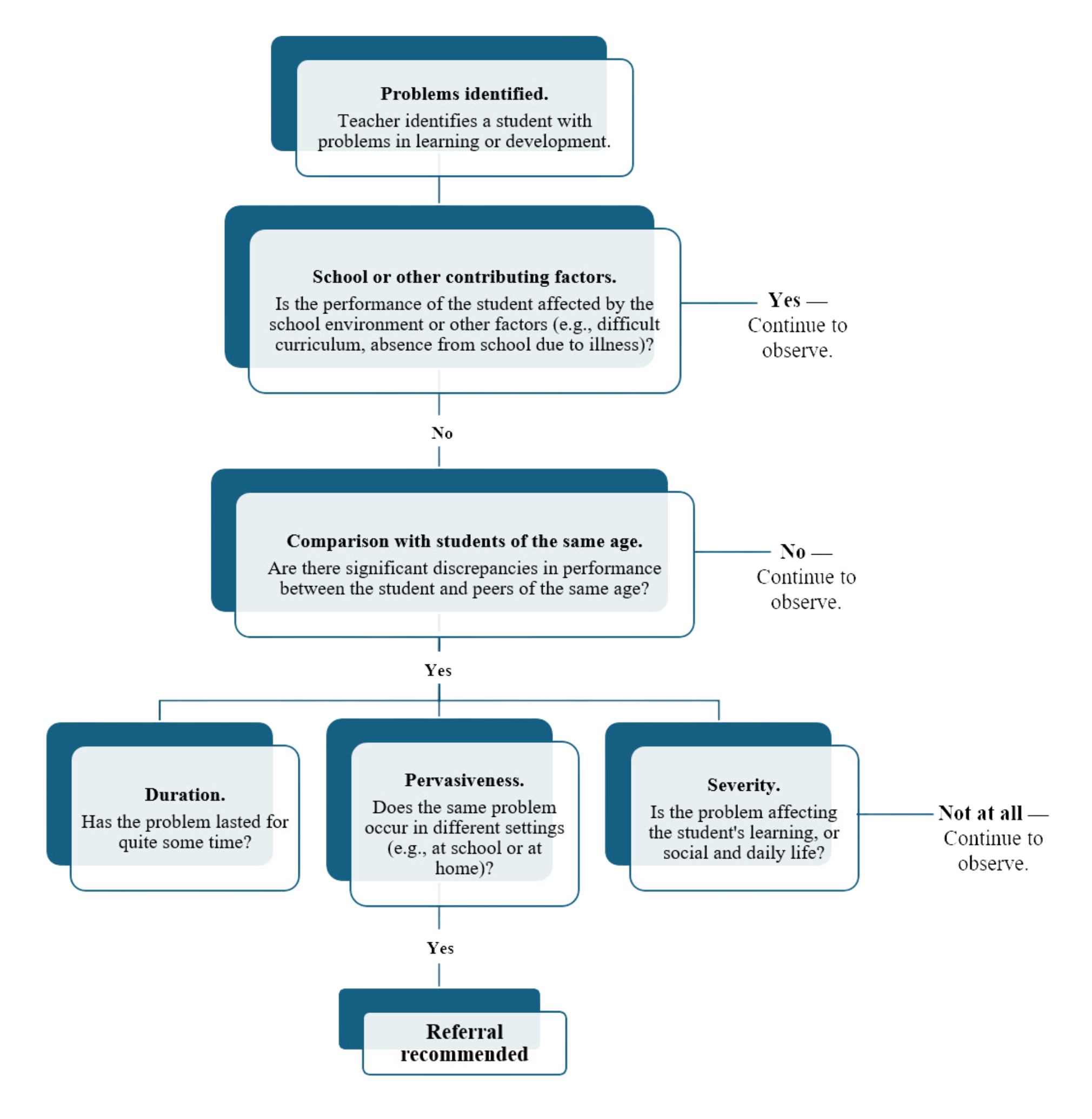Teaching Students with Special Needs in the Mainstream Classroom

Historically, students with special needs were segregated from the general education classroom and received inappropriate and/or inadequate services. Over time, research has been performed and awareness has spread about the superior effectiveness of keeping students with special needs in the general education classroom and creating an inclusive environment. Consequently, most students with disabilities and other special needs are now spending a good amount of their time in a general education setting.
Due to the passing of several pieces of important legislation, schools are now required by law to provide a free and appropriate public education in the least restrictive environment. What this means is that schools are required to integrate those students who have special needs into the general education setting, as much as reasonably possible, largely due to the fact that all students — regardless of whether they have a special education or disability diagnosis — are required to meet the same curriculum standards. Because of this, as a classroom general education teacher, you are likely to spend more time with students who have special needs than any other school personnel. By creating a welcoming environment in which students with special needs are taught based on their abilities as opposed to their disabilities, you are creating an inclusive classroom. Although there will be times when you will need to seek help from other professionals who are also very valuable in educating students with special needs, most of the instruction these students receive will ultimately come from you.
How can you determine whether a student needs to be evaluated for special education services?
The goal of the screening process is to filter out students who are struggling due to a deficit in the instruction and identify those who are struggling due to having special needs. Upon identifying the potential for special needs, be sure to review the student’s past work and assessment results in the problem area to help determine whether further investigation is necessary. If you decide that it is necessary to move forward in the special education process, this will be the first of many instances in which you will be required to evaluate student progress. To assist in determining whether a student needs to be evaluated, consider the following flowchart.

What are some teaching strategies that can be used to help students with special needs as they navigate the curriculum?
While there are indeed many different strategies that can and should be used with students with special needs, the following can be used to help students with special needs as they navigate the curriculum from their place in the general education classroom.
- Plan with the Universal Design for Learning (UDL) framework in mind. UDL is a teaching model that provides a flexible, whole-school approach to intervention. Embedded within this approach are three guiding principles. These principles are based on neuroscience research which demonstrates that people learn in different ways.
- Principle 1: Provide Multiple Means of Representation (the “what” of learning)
- Principle 2: Provide Multiple Means of Action and Expression (the “how” of learning)
- Principle 3: Provide Multiple Means of Engagement (the “why” of learning)
- Differentiate your instruction. In education, differentiation is a framework for effective teaching that provides students different ways to learn, regardless of their differences in ability, learning preferences, academic backgrounds, and reading levels. Differentiation is a way for teachers to provide targeted, specific instruction tailored to the individual needs of their students. As a teacher, differentiated instruction means that you observe and comprehend the similarities and differences among your students, and you then use that information to plan your instruction. According to Carol Ann Tomlinson, a leading pioneer in differentiated instruction, there are four different ways for teachers to differentiate their instruction within their classrooms.
- Differentiation through content.When the content is differentiated, teachers adapt what they want their students to learn or how their students will gain access to the skills, knowledge, and understanding.
- Differentiation through process.This involves the activities that help a student learn. How the material is learned can be differentiated based upon the students’ various learning preferences. Since each student has a preferred way of learning, successful differentiation includes using strategies that deliver the content to each learning preference, including visual, auditory, kinesthetic, and through the power of words (reading and writing) themselves.
- Differentiation through product.This refers to student outcomes — what a student can do to show his/her mastery of a concept. Using differentiation, teachers may assign different methods to different students to show mastery of a concept or idea.
- Differentiation through learning environment.This refers to how a classroom is set up to help a student be successful. Optimal learning takes place when a student’s classroom environment matches his/her learning preference. This includes the physical layout of the room, the way the space is used, various environmental factors, and the overall classroom atmosphere (how the teacher interacts with his/her students as well as how the students interact among themselves).
- Use the INCLUDE strategy to make the appropriate accommodations and modifications for students with special needs in the classroom.These steps are listed below.
- Step 1: Identify the classroom requirements.
- Step 2: Note student’s learning strengths and needs.
- Step 3: Check for potential areas of student success.
- Step 4: Look for potential problem areas.
- Step 5: Use information to think of ways to differentiate instruction.
- Step 6: Differentiate instruction.
- Step 7: Evaluate student progress.
Using this approach, methods for teaching and assessment must be adjusted so that all students can be successful in a general education classroom. It is a problem-solving model that can be changed over time depending on the needs of students. If a particular method does not result in academic improvements for students, changes should be made.
Teaching a classroom of diverse students is both a demanding and rewarding job. The sheer variation in ability levels, learning preferences, personality traits, and personal backgrounds of the students make each learning environment a multi-faceted platform for the construction of knowledge. Considering the great potential that lies within each student, teachers have the daunting task of helping them harness their unique strengths so that they can experience academic success. While tackling this task may not be easy, it is nonetheless extremely rewarding. Having the necessary knowledge and being able to effectively plan and dig deep into your creativity while simultaneously sporting a willingness to try something new are all keys to making your teaching practice as effective as possible for the community of learners entrusted to your care each day.
To learn more about how to successfully cater to the demands of your special needs students, visit the Professional Development Institute (PDI) website or our Teaching Students with Special Needs in the Mainstream Classroom (Grades K-6) course. For over 27 years, PDI has provided high-quality online professional development courses to K-12 educators worldwide. Our courses are designed to offer practical strategies that can be implemented in classrooms immediately while focusing on the most relevant topics in education. All our courses are instructor-led and conducted entirely online at the graduate level. University credit is also available through the University of California Division of Extended Studies. We offer an extensive catalog of online courses that cover the most critical topics in today's classrooms and are affordable for teachers.

View PDI's Catalog of Courses
Check out a list of all PDI graduate-level online courses or sort by grade level or subject area.

Register Now!
Quick access to register for PDI's online courses using our secure system.

Learn More about PDI
Find out how to reach PDI and get answers to any questions you may have.
